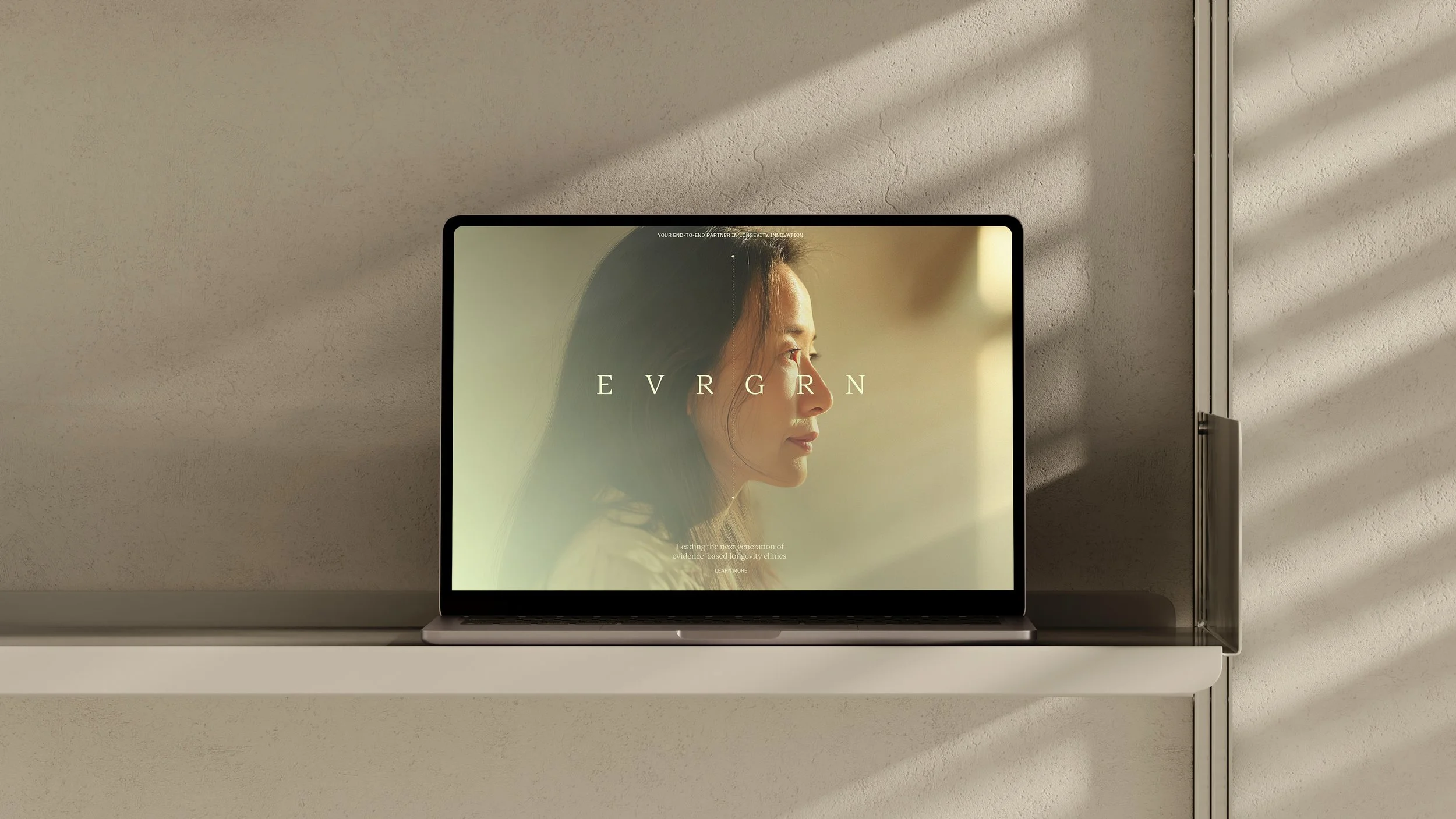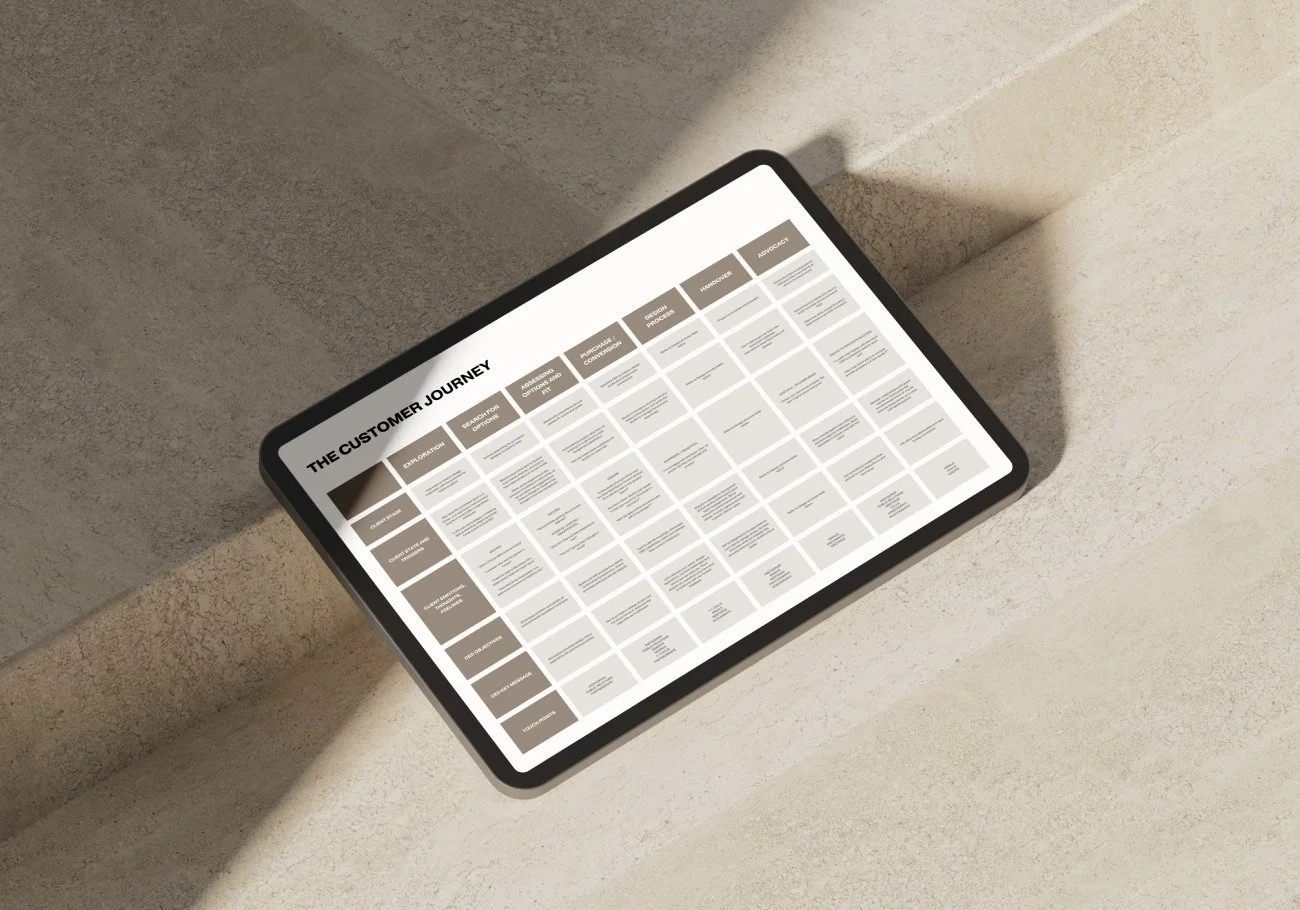EVRGRN \ TME
the beginning of the future of health care.
the brief
Launching a longevity medicine consultancy isn’t for the faint-hearted. Luckily for us, Louis came armed with a clear vision and the experience to make it happen.
Preparing to pitch to new clients and investors, Louis needed to:
Establish a brand that defined EVRGRN as a different breed of longevity consultancy, away from vague promises and cookie cutter advisory services.
Design a longevity integration model that reflected EVRGRN’s positioning as a long-term partner, different levels of interventions, clinic ambitions, and market adoption.
Redefine evidence-based longevity care to reduce negative associations and perceptions of accessibility.
the RESULTS
ISOLATED services
Evrgrn originally offered services like that of any consulting business. While customised, there was no obvious differentiation or strong USP that said “this is why you should partner with Evrgrn”.
No brand identity
As a new business, Louis hadn’t had the opportunity to build a brand identity for Evrgrn, but he knew what values he wanted to follow..
Unclear audience
There were so many customer groups that Evrgrn could target, but which ones presented the most painful problems?
lack of offer design
Beyond knowing what services were on offer, Evrgrn had no transformation process or tiered offering that would allow them to overcome the “new-brand-no-track-record” challenge. High-investment engagements were viewed too high-risk.
assumed knowledge of the audience
Part of presenting a compelling solution is articulating a strong problem statement. Before working with TME, Evrgrn’s messaging and offering assumed existing knowledge of the problem with current care models.
Business model: longevity integration
We worked with Louis to understand the possible pathways for clinics to integrate longevity medicine into their businesses and developed Evrgrn’s service model around that. Ad hoc services turned into long-term programs that focused on transformation.
clear brand identity
After figuring out the two priority customer groups, Evrgrn’s services and its position in the market, it was time to develop a minimum viable brand. With a design partner we established basic brand guidelines, landing page and a deck which would be enough to grow to the next stage.
offer design that built trust
On top of the longevity integration model, we helped Evrgrn develop a variety of offers to test in the pre-purchase phase that would allow prospective customers to build trust with Evrgrn.
We introduced low-risk, high-impact offers that made sense for the customer and would open more conversations with Evrgrn.
lean on storytelling
In an effort to build rapport with the target audience and show credibility in the industry, we helped Evrgrn articulate the problem with the current market and the opportunity for longevity medicine.
It was about highlighting the wins for the business if they evolved into longevity medicine (and the potential losses if they didn’t), as well as the social impact of doing so in the long run.
operational goals
1 \ Build a holistic business model that considered marketing as a whole
The business model had to show that it was customer first and focused on the foundations.
2 \ focus on sales conversions
Moving quickly on the absolutely crucial elements so Louis could go-to-market to test his assumptions.
With limited internal capacity, we’re testing one element of the business at a time and avoiding any over complication which might make processes more complex than necessary.
the SCOPE
Foundation workshop
Marketing Opportunities and Priorities
Strategy
Vision, Mission and Value Proposition
Customer Research
Competitor Research
Service Packaging and Pricing
Customer Journey Mapping
Content Pillars
Brand Strategy and Development
Brand Storytelling
WHY IT WORKED*
*This is something not often discussed, but we’re all about cutting the BS, so let’s get to it.
The ongoing success of any strategy is dependent on two key factors:
The process or plan for implementation must be easy to follow
The client must be interested and willing to put in the work on a continuous basis
Here’s what louis did to achieve his goals:
understood the value of investment in design
Good design helps communicate value, professionalism, quality and trustworthiness.
open to restructure services to overcome the customer problem
Louis knew that his service offering might have to change in order to fit his customer’s needs and was open to restructuring his business model to suit.
Focused on one thing at a time
With limited resources, we focused on early customer discovery, a minimum-viable brand, offer design and pricing.
There are always 100 things to do. Being able to sideline the nice-to-haves is part of allowed us to work quickly through the foundation of his business and understand where to put our efforts.
an ability to return to the customer
While testing can take weeks and in some cases months, Louis was always able to come back to the customer problem and how we were solving it.
accepted the reality of marketing
Marketing is an experiment. Louis understood that finding Evrgrn’s sweet spot in the market was equal parts figuring out what works and what doesn’t.


